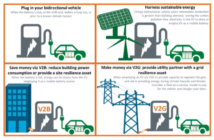Electric wires are cylindrical pieces of metal that are flexible and can vary in size (millimeters to centimeters). They allow electricity to be used in any part of a structure or machine. The current coming from an electrical source flows through these metal wires so it can power lighting, equipment and appliances. These wires are covered by insulation that makes it safe to hold. This is because the insulated material will not conduct electricity.
Electric wires are usually made of aluminum or copper. In the past, copper was the main preference because it is the best conductor among metals (at least, next to silver). But once the cost of copper started rising, aluminum became the popular choice. However, since aluminum is more resistant, you will need a lot more strands to create a bigger conductor to make it as effective as copper.
Here are some of the important facts you need to learn about electric wires.
- There are two forms of electrical wires: solid and stranded. A solid wire has a single wire strand. A common type is known as a wire wrap. A stranded wire is composed of several solid wires that are bundled together. The stranded wire is more flexible than solid wire – this is why it is the preferred form when the wire is expected to move a lot. A solid wire is best for circuits on a breadboard.

- Electric wires come in varying thickness in diameter, known as gauge. The gauge determines the amount of current that the wire can handle. The thicker the wire, the more current it can handle. The two measuring systems for gauge are the American Wire Gauge (AWG) and the Standard Wire Gauge (SWG). The lower the number, the bigger the diameter (e.g. 10 = 2.588mm while 28 = 0.321mm).
- Wire stripping is important when using wires for electrical connections. It is the removal of the outer insulation layer to expose the wire inside. When performing wire stripping, you have to be careful not to nick the wire underneath to avoid a break in the connection or an electrical short. A wire stripper is the tool that will help avoid nicking the wire. This tool has different notches for various wire gauges. To strip the wire, the wire stripper should be squeezed on the desired length and then twisted slightly to cut the insulation. Once cut, carefully slide the insulation off the wire.
- An electrical connector is oftentimes needed to join two electrical wires or connect a wire to a terminal. The connector has to be matched with the right size of wire. The connection is usually done through crimping, which is when two pieces of metal are joined by deforming one wire or both. You usually insert the wires in a connector and then squeeze the metal so the wires are held together. It is important to use the right tool called a crimper so there is a cold weld between the wire and the connector. You do not want air pockets between them to avoid moisture. Collected moisture can cause corrosion, then resistance, then heat and then the ultimate breaking of the wire. A crimp done correctly should not pull apart even after a strong force is exerted.



